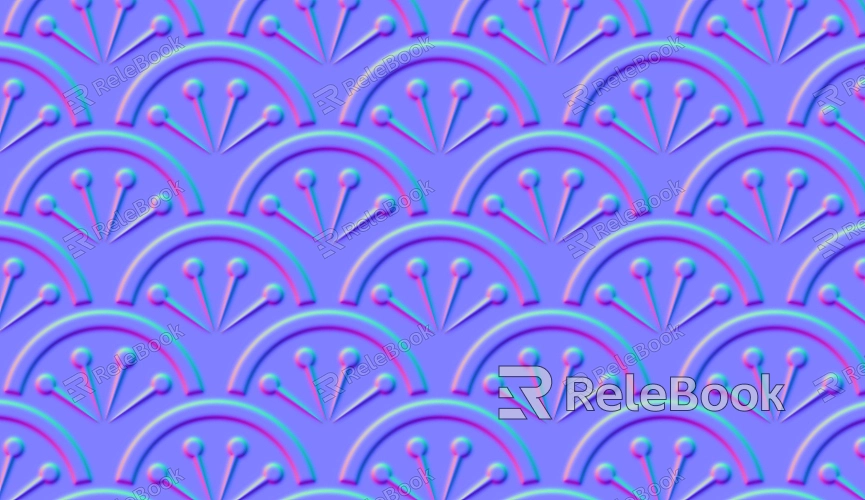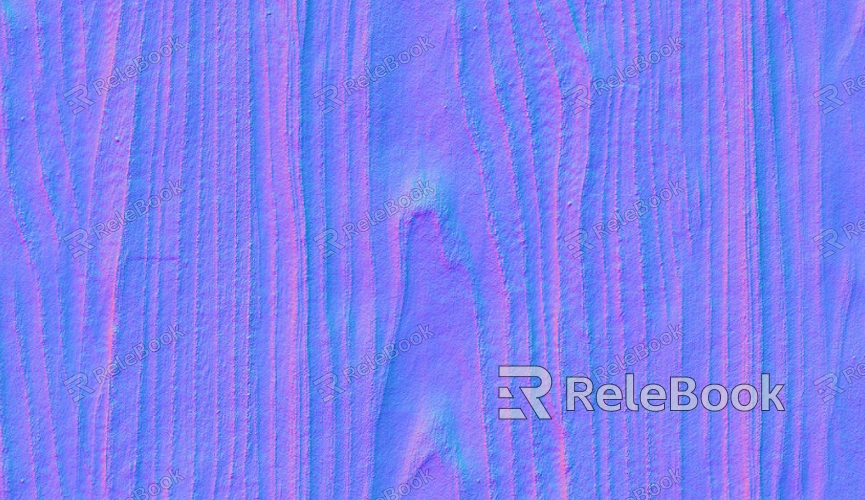What is the Purpose of UV Mapping?
In the world of 3D modeling and rendering, UV mapping is an essential technique that determines how a 2D image texture is projected onto the surface of a 3D object. Whether in video game development, film production, or virtual and augmented reality, UV mapping plays a critical role in adding detailed and realistic surfaces to 3D models. This article delves into the fundamentals of UV mapping, how it works, and its applications in various fields.

The Basics of UV Mapping
UV mapping is projecting a 2D image (like a texture or decal) onto a 3D model. This process involves unfolding the surface of a 3D model into a flat, 2D representation and mapping texture coordinates (UV coordinates) to each surface element. Simply put, UV mapping acts as a bridge between 2D images and the 3D world, allowing us to apply intricate details to 3D objects effectively.
3D models are often made up of multiple small surfaces (like triangles or quadrilaterals), which cannot naturally host a 2D image directly. UV mapping translates these surfaces' coordinates, allowing them to be “unwrapped” or “stitched together” into a shape suitable for accurate texturing.
How UV Mapping Works
The principles of UV mapping are relatively straightforward. First, each face of the 3D model needs to be mapped onto a specific point on a 2D plane. During this process, every vertex in the 3D space is assigned a UV coordinate. These coordinates function like latitude and longitude on a map, pinpointing which parts of the 2D image should appear on specific areas of the 3D surface.
To ensure proper texture alignment, UV mapping must address issues like texture stretching and tiling. Designers often use unwrapping algorithms to "cut" and flatten the complex 3D surface into a 2D shape, ensuring textures are applied accurately without distortion.

Applications of UV Mapping
UV mapping is widely used across multiple industries, particularly in content creation and 3D graphics processing. Below are some key applications:
1. UV Mapping in Game Development
UV mapping is critical in game development. Characters, objects, and environments in games rely on textures to enhance visual appeal. With UV mapping, developers can precisely apply detailed patterns (like skin, clothing, and architectural surfaces) to 3D models, ensuring every aspect is rendered accurately. Proper UV mapping not only enhances realism but also optimizes game performance by reducing texture distortion and redundancy.
2. UV Mapping in Animated Films
In animated movies, especially those focusing on high levels of detail, UV mapping plays a pivotal role. From the texture of a character's skin and fabric folds in clothing to the material surfaces of background objects, UV mapping ensures textures fit perfectly on 3D surfaces. High-quality UV mapping enables animators to bring characters and scenes to life with stunning visual fidelity.
3. UV Mapping in Virtual and Augmented Reality
With the rise of virtual reality (VR) and augmented reality (AR), UV mapping has expanded into immersive experiences. In these applications, the accuracy of texture mapping on 3D models significantly impacts user perception. UV mapping ensures virtual objects display textures correctly, enhancing both realism and interactivity in VR and AR environments.
4. UV Mapping in Industrial Design and Architectural Visualization
UV mapping isn't limited to entertainment; it also finds valuable applications in industrial design and architectural visualization. By using UV mapping, designers can apply realistic materials, textures, and colors to 3D models, allowing clients to visualize designs more intuitively. In architectural visualization, UV mapping helps create lifelike details such as walls, floors, and windows, making renderings look highly professional and realistic.
Challenges and Solutions in UV Mapping
While UV mapping is a powerful and practical tool, it often presents challenges during implementation. Below are some common issues in UV mapping and ways to address them:
1. Texture Stretching and Distortion
One common problem in UV mapping is texture stretching and distortion, which occurs when the 3D surface isn't unfolded properly. To address this, designers typically use various unwrapping algorithms (like spherical or planar unwrapping) to ensure each surface is as flat as possible without excessive stretching. Carefully designed UV maps minimize these distortions.
2. Overlapping UV Coordinates
When multiple faces share the same UV coordinates, texture overlaps can occur, leading to inaccurate or unnatural texture appearances. To solve this, designers ensure that each 3D surface has a unique UV space. By carefully cutting and unwrapping the model, they can maximize the use of UV space while avoiding unnecessary overlap.
3. Optimization and Performance Issues in UV Mapping
In games and real-time rendering, optimizing UV mapping is crucial. Overly complex UV layouts can affect rendering efficiency and cause performance bottlenecks. To address this, designers streamline UV layouts, reduce unnecessary polygons, and choose appropriate texture sizes to balance quality and performance.
UV mapping plays a pivotal role in modern 3D graphics and content creation. From game development and film production to virtual reality and industrial design, it enables detailed texturing and realistic visuals for 3D models. By understanding the fundamentals of UV mapping and addressing its challenges, designers can create high-quality, visually appealing results. To further enhance your creative projects, visit Relebook to download high-quality 3D models and textures.
FAQ
What is UV Mapping?
UV mapping is a technique for applying 2D textures to 3D model surfaces. It assigns UV coordinates to each face of a 3D model, determining which parts of a 2D image should appear on specific areas of the 3D object.
Is UV Mapping the Same as Texture Mapping?
Texture mapping is a broader term that refers to any method of applying textures to 3D models. UV mapping is a specific type of texture mapping that uses UV coordinates to precisely control texture placement.
How Can UV Mapping Be Optimized?
UV mapping optimization involves avoiding texture stretching, reducing overlap, and effectively utilizing UV space. Additionally, selecting appropriate texture sizes and using efficient unwrapping methods are essential for optimization.
Which Software Supports UV Mapping?
UV mapping is a fundamental feature in 3D modeling and rendering software. Tools like Blender, Maya, and 3ds Max all offer robust UV mapping capabilities.

